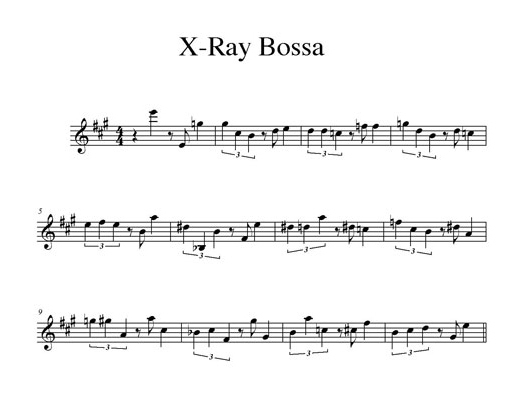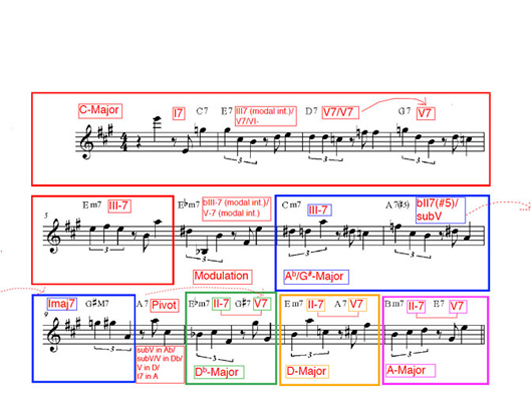Sound to Music: Infusing Noise With Meaning
Avant-garde composers have experimented with aleatoric music, in which randomness plays a major role. The sonified x-ray data would lend themselves most obviously to that type of music. However, we wanted Volkmar Studtrucker's compositions to conform to a more conventional understanding of music. The underlying intention was to highlight some critical elements that, in most people's minds, distinguish music from noise. In both the original scientific use of sonification and its transformation to music, the same basic process appear to be at work: giving a meaning to sound. Sound in the absence of meaning is considered noise.
Attachments of meaning to sound are numerous and everywhere, from language to alarm bells. Music is one particular instance. We might say that the composer attaches musical meaning to the sounds, and as far as the listeners decode a musical meaning in the sounds they hear they interpret them as music. Music, thus, is in the ear of the listener. However, this is not totally arbitrary. The following are some individual features that support the perception of sounds as music rather than noise.
Hearing sounds from standard musical instruments provides the listener familiar with them a first hint for interpreting the sounds as music, not noise. The overall length and form of the pieces signal "song" to the cultural insider. Further references to certain style-characteristic patterns allow the listener to perceive the pieces as bossa, fugue, waltz, etc. One might also look at the elements of rhythm, melody, and harmony.
Rhythm
Throughout the whole available sonification transcript, the rhythm remained totally constant—always clave. But the different pieces slightly twist that basic rhythm in one way or the other and thus are able to allude to different musical styles.
Melody
The melody was predetermined by the seemingly random sequence of pitches in the sonified data. The key element of the noise-music transformation in this regard is what might be called chunking: selecting a short piece from the endless stream of sonified x-ray data and then repeating it. The repetition of a relatively small number of notes allows the listener to recognize a meaningful melody, rather than noise (that is, just one random note after the other).
Harmony
The most important element of the noise-music transformation is, in this case, harmony. Figure 1 shows the melody of X-Ray Bossa, and Figure 2 shows its harmonic structure. Adding harmonies helps transforming noise into music. The "random" pitch sequence of the x-ray data complicates the harmonic structure that can be fitted to it and suggests multiple tonal centers (different colors). Nonetheless, the fitted harmonic progression contains enough familiar features so that the result can be perceived and interpreted as music. Stock chord combinations, ubiquitous in Western music, are highlighted: the IIm-V7 sequence (brackets), the dominant resolution (arrows), and the substitute dominant resolution (hashed arrows).
The project suggests that, in addition to the scientific pathway, there is another, artistic, pathway of nostrification through which humans can make their own and endow with meaning something as far away and strange as an x-ray emitting cataclysmic variable binary star system.



